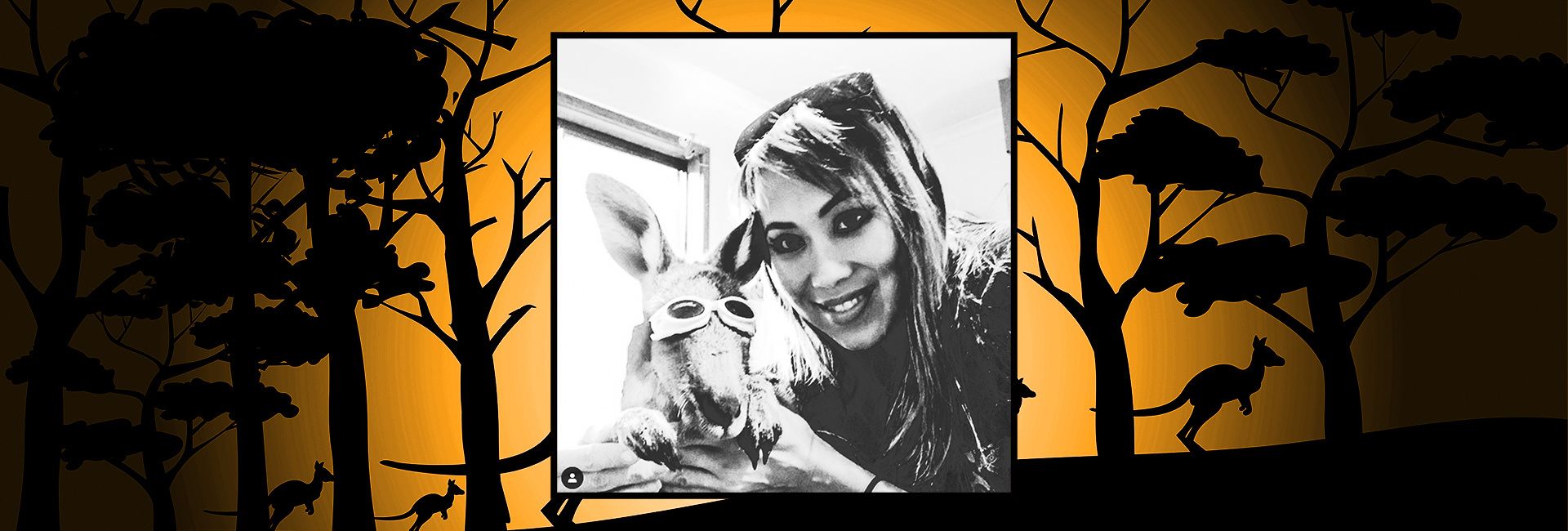Three Sydney animal care workers have rehabilitated at least 35 injured mammals in the year since Australia's forests were devastated by the unprecedented Black Summer fires which displaced or killed an estimated 3 billion animals.
Sonja Elwood, founder of Sydney Wildlife, and veterinarian Audrey Shen, featured on Bondi Vet, joined NSW bushfire animal rescue efforts as the fires began to take their toll in spring last year, worked closely with the animal survivors through the brutal summer and continued their efforts long after the fires were extinguished and the media spotlight moved on.
"It was a Holocaust … so many animals are gone, but our triage centres have been working non-stop to save the survivors," said Elwood, whose organisation Sydney Wildlife has worked with two east coast triage centres. In August, the team released five kangaroos back into the wild and in early September, the last of their rehabilitated kangaroos were released.
Another Sydneysider, Rhys Donovan, an animal osteopath and physiotherapist, also volunteered during the crisis to rescue and rehabilitate injured native animals. "Before, a lot of kangaroos were euthanised but as a result of all the work done, we've given them a second chance at life," said Donovan, co-founder of Animal Rehab Klinik, in Sutherland.
When the coronavirus pandemic struck and communities went into lockdown the challenging rescue work was deemed "not essential". The Federal Government declared the wildlife rehabilitation sector a non-essential service.
"When coronavirus hit, everybody forgot, all the donations stopped coming in and there was only maybe two of us carrying on the work with whatever money we could put together," said Shen, founder of Aussie Mobile Vet.
During the lockdown period, which threatened to disrupt treatment and rehabilitation for many of the injured animals, vets were crucial to carrying on the work, said Elwood. "In the South Coast in particular, the vets kept going because they're an essential service … some of them drove long distances to be on duty at the triage areas. They're all working free. They're not making any money out of it."
'Everybody thinks the animals ... stayed for four or five weeks but really it's taken about 29 weeks to recover and rehabilitate.'
As government and media focus shifted due to the pandemic, animal service workers quietly continued the work of rehabilitating native Australian animals whose injuries have been severe and on-going.
"Everybody thinks that the animals came into the sanctuaries and stayed for four or five weeks but really it's taken about 29 weeks for them to recover and rehabilitate," said Shen.
"I initially volunteered for a weekend, but a weekend turned into about four or five months," said Donovan. "The wounds on the animals would heal, but then they'd get other issues … sometimes they got infections or toenails started falling off. Most of the kangaroos will end up living in sanctuaries because of these related health issues," he said of the animals he treated.
The intensity of the fires was so catastrophic, climate scientists have suggested bushfire-impacted wildlife and their habitats may never fully recover. Separately, the bushfire crisis highlighted the limitations of government protocols regarding biodiversity and bushfire management.
Dermot O'Gorman, head of of WWF Australia, said it was important now more than ever for the government to strengthen the Environment Protection and Biodiversity Conservation Act. A review of the federal act is due next month.
Elwood, of Sydney Wildlife, called for the state to act too, explaining wildlife and wildlife carers were not included in NSW emergency management protocols. "If you're a dog or a cat or a horse, someone will come help you…the government has a framework for that, but they don't have anything for Australian wildlife," she said.
Triage centres and sanctuaries run by the volunteers and wildlife organisations have been filling the gap, with volunteers learning how to treat injuries on the run. "When it comes to burns every little bit of time counts and lot of it for us was learning and acting on the spot as fast as we could," said Shen. "The good thing is that we now have a better knowledge of how to deal with these situations."
For now, the koalas and kangaroos under their care have been rehabilitated and released back into the green shoots bushland they were rescued from. However, there are unsettling forecasts that bushfire events like the 2019-20 Black Summer season will occur with greater frequency as the planet continues to heat up. In the face of this, rescuers like Shen remain focussed on the animals. "Protecting the animals is the most the important thing, so if this does happen again [after this year's experience] we know we'll be able to save far more lives."






